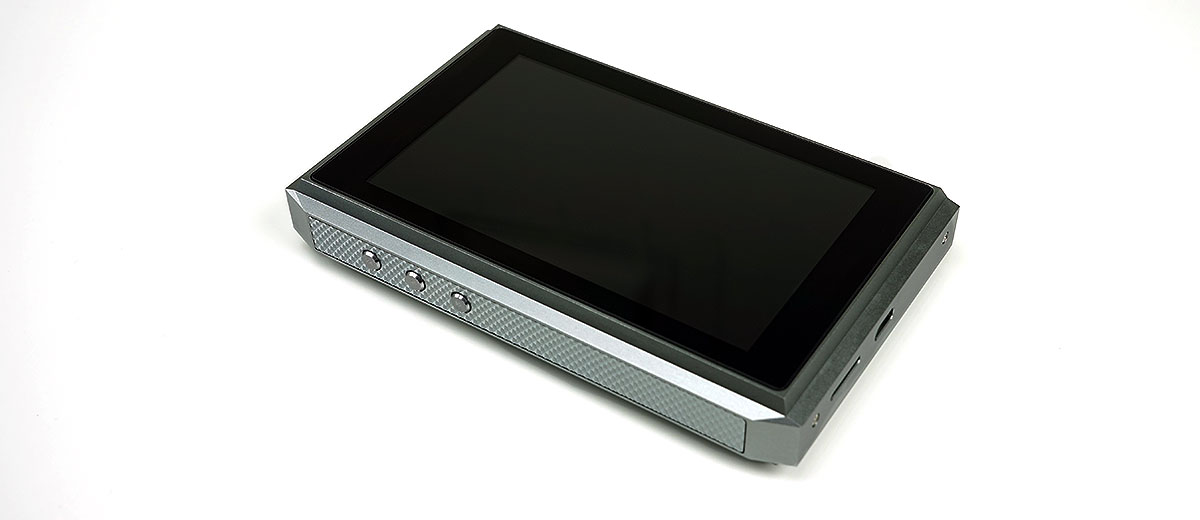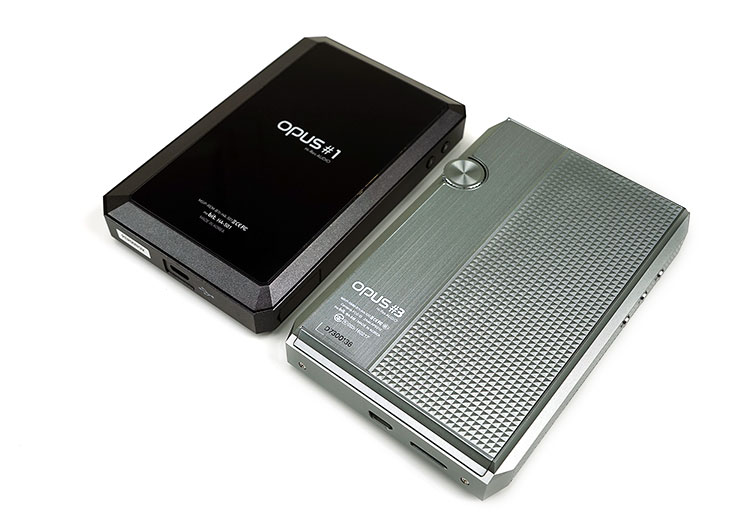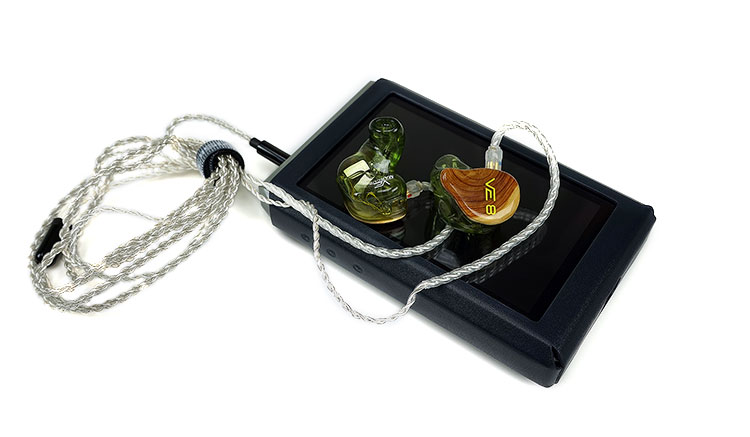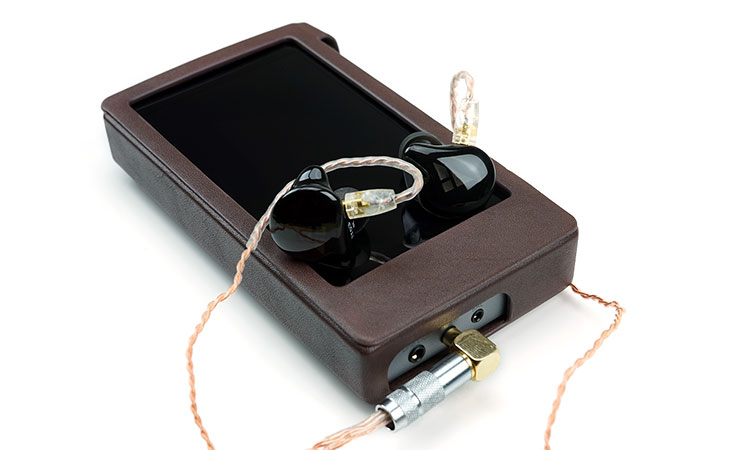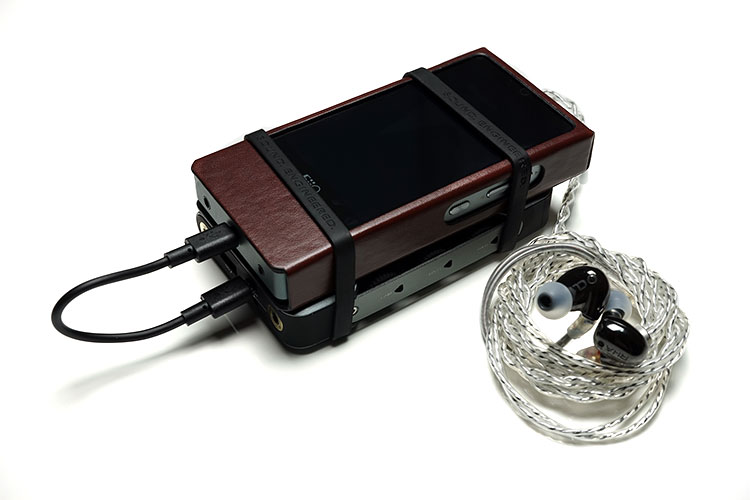Sound Impressions
Tonality & Presentation
Opus#3 has a very similar tonal quality and presentation to the Opus#1 though it has a few small tweaks that place it above the Opus#1.
The first is the level of lower treble energy and clarity which is greater in the Opus#3. Percussion is just that little bit more dynamic, slightly brighter, and with more bite.
Vocal work again is organic and natural sounding but in keeping with that higher level of clarity there does seem to be a bit of a cleaner edge and a hair breath more texture and snap in general to the Opus#3 mid-section.
The second tweak is the level of detail, particularly in lower-pitched instrumental work such as bass guitar twangs which had better definition and more accurate sounding than the Opus#1.
Staging-wise the Opus#3 still has better width than depth and decent height which, again, is similar to how the Opus#1 staging performed but I think the Opus#3 does a better job in terms of imaging and articulation.
Otherwise, this is a smooth performance but as with the Opus#1, it is a reasonably polite curve with nothing aggressive, recessed or peaky, fairly well balanced overall. The low end is where it draws the most of it warmth with its mids and top-end staying a little bit more neutral.
Bass
Those coming to the Opus#3 for the first time will find the bass response more to the warm side but compared to the Opus#1 I found the accuracy and clarity to be just that bit better.
The level of detail was more prominent, particularly on subtle passages of bass guitar play around 60 Hz up to and including the lower mid-range. On the Opus#1, it was a touch softer and looser, on the Opus#3 the texture, snap and accuracy was more palatable.
It is not an aggressive bass response like the Cayin i5, nor is it as planted sounding as the X5iii fatter low end. Instead, it stays reasonably balanced with a greater mid to upper bass emphasis and less sub-bass presence though I wouldn’t say rolled-off.
Mids
Again, the tonal quality of the Opus#3 is very similar to the Opus#1 but what has changed is the level of detail particularly in the upper mids with voicing just a tiny bit more energetic and focused sounding.
The Opus#1’s note quality was more rounded for me and not quite as clean as the Opus#3 beyond 1k. This is important because whilst I felt the mids on the Opus#1 were spacious and detailed it didn’t quite have the punch and dynamics to grab my attention.
On the Opus#3, the vocals have a bit more presence and clarity and the layering sounds more refined. It still remains a largely neutral sounding mid-range but the instrumental separation is a bit better now with the result the vocals have a bit more space to work with and grab my attention that bit more.
Treble
This is a subtle change-up from the Opus#1 but it is really more about the clarity and boosting of the lower treble and the transition from the upper mids to the lower treble particularly with detail and sparkle in percussive passages.
It still remains an airy, smooth and non-offensive treble response curve but this time the dynamics and detail for me are up a notch so I get a more satisfying cymbal splash for example with a cleaner edge as well as a bit more presence.
Matchability
Efficiency
The latest OS on the Opus#3 has 3 levels of gain, low, mid, and high. All 3 settings are very quiet with an exceptionally good black background for efficient IEMs. These settings are also available on the Opus#1 since they share the same OS.
Both DAPs also share similar SNR, THD-N, and crosstalk numbers with only a 1dB difference between the Opus#3 at 114dB SNR compared to the Opus#1’s 115dB though.
You may actually begin to think that the Opus#1 is on par until you check out the voltage numbers running through the amp and you can see that right away the Opus#3 at 2.5Vrms singled-ended is more powerful than the Opus#1 at 2Vrms.
This amping difference played out with most IEMs paired with the Opus#3 with the Opus#1 routinely requiring around 4-5 digital steps more in voltage to volume match the Opus#3 with sensitive IEMs such as the Andromeda, 64 Audio A18, and the Shure SE846.
The difference is less noticeable on more power-hungry and less efficient IEMs such as the Vega where at best there was a 1-2 step change but it is still noticeable. The Vega also sounds better driven on the Opus#3.
Balanced
There is not a huge increase in power with the balanced output, 0.5Vrms increase to be precise. Compared with something like the DX200 which outputs at 6Vrms on its Amp 1 balanced it is a bit weak in comparison.
There is little volume adjustment to be done swapping from balanced to single-ended output but you will notice the additional power, slight as it may be.
It is my preferred output where possible simply due to the better dynamics and fuller sound compared to the softer leaner sound of the single-ended output. IEMs such as the Fidue A91 sound a whole lot more dynamic in balanced mode with the Opus#3.
Line Out
Analog
There is a line out option in the drop-down menu on the Opus#3 but you will not see individual Vrms or voltage ratings for line out with the Opus#3 because it does not have a true line out.
Line out on the Opus#3 will go through the internal amp so you are in effect turning up the volume to its highest setting but still throwing out an amped signal meaning you are double amping if doing an analog IC to another amp.
Part of this is technical with all outputs coming out of the same jack (line, headphone, and optical) whereas generally in the likes of the X7/DX200 this is split into two jacks for analog and digital. It is a shame because at this price point a good analog out would have made sense working a USB DAC out from the PC into an analog amp.
Digital
The Bit has provided an optical connection instead so you can signal out to another DAC or portable Amp/DAC with SPDIF optical inputs. Good pairings here include the RHA CL1 Amp/DAC which is a more aggressive and powerful solution and lifts the stack up to headphone driving level though it is noisier than the jack out of the Opus#3.
If you want to zero on detail then you can go much higher with the Chord Hugo which is a cleaner and more resolving pairing than the RHA L1.
For budget portable audio SPDIF you could do a lot worse than iBasso’s D14 which added a little more sparkle to the mids and treble performance and toned down the warmth of the low-end of the Opus#3 amp.
I would say though the D14 introduces a more Sabre-type sound so it is not quite as smooth sounding in the lower treble and vocals but it is a good option for those looking for a cleaner presentation.
Select Comparisons
iBasso DX200
$949
OS
Depends on how you look at it. On one level the DX200 is more open than the Opus#3 with a full and unrestricted 2GB RAM Android OS, downloadable apps and a dedicated music app of its own (Mango) all splashed on a 4k capable LCD screen.
If you do not like Mango just download any one of a ton of other music apps and you are good to go. The Opus#3 is very limited in that sense with its walled Android and only 1GB of RAM which is hit and miss for the performance levels of the latest downloaded app versions.
On another level, though Mango, the dedicated app, and the dual boot alternative to open Android is slower, buggier, and at times more awkward to work with than the snappier Opus#3 OS.
Notably, the DX200 has gone through several iterations of the screen responsiveness with it almost unusable at one point before the last firmware brought back the touch responsiveness. It does have a number of interesting options such as channel balanced and the digital filters but for me, the Mango app doesn’t feel as easy to work with as the Opus#3 skin is.
Technical
The ES028 Sabre chip is class-leading in performance numbers and the Opus#3 Burr-Brown chip is getting on in years despite its more than capable numbers. The Dx200 has 2 packed inside nevermind 1. Outside of the chip, the amping on the AMP 1 card is much more powerful with 6Vrms from the balanced output compared to just 3VRMS from the Opus#3 balanced out.
The DX200 also has a true line out though both do have SPDIF digital outputs. Both are excellent with noise and both handle sensitive IEMs really well, much better than FiiO’s X7 amp cards. The Opus#3 is on par with noise performance which really pleased me.
The Opus#3 is the more hand-friendly of the two DAPs with the DX200 looking rather large in comparison and it also weighs 20g more. Battery life is similar on both DAPs at around 8 hours though I suspect you could really shorten the DX200 battery life with a ton of apps and 4k videos, much more so than the Opus#3.
Tonality
The DX200 is more neutral in its tonality and slightly more linear sounding across the board. Texture and detail have a slight edge, particularly in the lower mids where the Opus#3 has a slightly warmer fuller sound and a bit more of a mid-bass boost.
Treble on the DX200 is a bit brighter, more in line with a Sabre type delivery but it is still very clear and a little more articulate than the Opus#3 in the final octave. Instrumental timbre is a bit more neutral and accurate sounding than the warmer Opus#3.
Vocal positioning on both DAPs are similar but again the DX200 carries a little more detail and texture. Overall the Opus#3 loses out a bit on detail to the DX200 but it comes across as the slightly more forgiving of the two DAPs whereas the more neutral DX200 might expose a flaw or two in your source tracks given its heightened level of transparency.
LP L3 PRO
$549
OS
The L3PRO is a mid-fi dedicated DAP with zero wireless connectivity other than OTG digital and USB DAC and proprietary software that is very limited compared to the walled Android flavor used by the Opus#3.
That being said it is pretty fast, reasonably stable just not that involving, and as advanced. The lack of wireless connectivity is one feature the Opus#3 has a clear edge with neither BT nor WiFI present on the L3PRO.
Technicals
On a technical level, the L3 PRO uses the older dual DAC Cirrus CS4398 from the Opus#1, ships with 32GB internal memory compared to 64GB on the Opus#3, and also has a slower CPU and a lower memory card limit of just 128GB.
On the flip side, the L3Pro has a true line out and SPDIF, made from a solid alloy with a very nice wood plate back as opposed to plastics, weighs a lot less, almost 60g less, and has a longer battery life by 2-3 hours.
Tonality
Tonally both of the DAPs are very similar indeed with a warmer than neutral timbre and a very wide and spacious presentation. Where they differ is perhaps in the low end and lower treble. The L3Pro sounds a little more extended and fuller in its sub-bass performance compared to the Opus#3 which has a warmer midbass performance.
The treble is also a little livelier on the L3PRO though not by a huge amount and slightly thinner than the Opus#3 treble. Both articulate very well indeed and have similar levels of performance at the very top end so both have an airy feel and decent headroom.
FiiO X7
$649
OS
On the OS side, it is a big advantage for the X7 with the very open Android setup which allows for a very traditional look and feel, plus dual boot into the FiiO Pure Music Mode.
Now using 5.1 also does have some advantages such as aptX, a wide range of app support including DLNA for home networks, OTG, and a true line out. It is a very competitive piece of kit and in some ways, The BIT should seriously consider upgrading to aptX as well as getting more apps compatible with the Opus#3 for the price point.
Technicals
On the flip side, most of the amps from FiiO, except for Amp 1 are noisier than the Opus#3 both in unbalanced and balanced output, especially with sensitive IEMs. The AM3 balanced mode, AM2a, and AM5, however, are more powerful and dynamic sounding than the balanced output of the Opus#3 and in general, the more powerful cards of FiiO do have more kick in them.
Only AM1 shows comparable low noise levels and I actually prefer the warmer more airy tones of the Opus#3 over the rather neutral and flat sounding AM1. Efficiency wise the Opus#3 is closer to the AM2 card in terms of output but it is quieter with a blacker background.
Tonality
Ultimately this depends on your chosen module for the X7. Compared to the AM1 the Opus#3 has a more natural sound with a more pleasing and engaging tonal quality and better staging qualities to the slightly sterile IEM amp.
Throw on the AM2 module and the Opus#3 has some challenging competition with increased dynamics, more aggressive low-end, and better vocals. The Opus#3 still has the staging edge but it’s otherwise warm and more relaxed tonality can at times be caught napping by the AM2 module.
The AM3 has the more powerful balanced output also but note it has a noisier balanced out than the Opus#3. I find the BITs mid-fi DAP to be more suitable than the AM3 for sensitive IEMs in that regard.
Both have a smoother tonal presentation but the Opus#3 sounds a little warmer, more open sounding in the mids, and has more body to its instrumental note. Vocals are also a bit warmer and slightly more forward-sounding than the AM3.
Our Verdict
The Opus#3 is an improved version of the Opus#1. It has a more “open” OS than before and the ability to connect online is a big advantage. It also has a better build, a nicer volume control jog wheel, and a leather case that is every bit as good as the last one.
Technical
Technically, it is about time they got that wireless option going and whilst I love the fact the Opus#3 has WiFi and BT for OTA, streaming on certain apps, DLNA and BT 4.0, I am also a bit meh on the baby steps
The BIT has taken on app approval. They, like FiiO, are working on an initial whitelist and I wonder how long it will be before they will open it up a bit more like FiiO. It won’t be as much, it is is not a full Android system in that respect so it has some curious navigation methods but otherwise, their skinned version is pretty snappy and easy to use.
In The Wider Context
Hmm. As a DAP compared to other DAPs in the price bracket it may have its work cut out to convince you it is the one for you. At $899 it is nip and tuck. Some of the choices may come down to pure tonal preference and compared to the DX200 and X7, it is no clone that’s for sure.
One big thing is the low noise level on the Opus#3. This places it ahead of FiiO and on par with the DX200 but the lack of balanced power might convince others that the more open Android DX200 is the right option.
Then again the sheer size of the iBasso flagship and its clunky Mango app compared to the “it just works” Opus#3 skin may make you feel more confident in a day and daily usage scenario. If it is sensitive IEMs, then it is the Opus#3 over FiiO, be it X5iii or X7 with every amp really bar the AM1.
Tonal Verdict
Tonally I like the tweaks they did also to the presentation as a step up from the Opus#1. It retains that smooth flowing open sound but threw in a better low-end definition and a touch more energy and dynamics to liven up the upper mids and lower treble.
It is not a huge difference but more of an evolution of the house sound which they seem to be aiming for which is easy-going, relaxed, and very enjoyable. If it comes down to tonal preference and you enjoyed the Opus#1 then you are going to consider the Opus#3 a quality upgrade.
If you are stateside you can buy at the official distributor directly via https://shop.musicteck.com/collections/opus
Opus#3 Technical Specifications
|
MODEL |
OPUS#3(HA-530) |
|
Body |
Tempered Aluminum [Metal Body] |
|
Display |
4″ TFT Touch Display(480*800) IPS PANEL |
|
Dimensions |
74mm(W) x 117mm(H) x 18mm(D) |
|
Weight |
220g |
|
CPU & RAM |
ARM Cortex-A9 1.4GHz, Quad-Core & DDR3 1GB |
|
Button |
POWER, PLAY/PAUSE, FF, REW VOLUME(WHEEL) |
|
Supported Audio Formats |
WAV, FLAC, ALAC, AIFF, WMA, MP3, OGG,APE(Normal, High, Fast), native DSD(DFF,DSF) |
|
Sample rate |
PCM : 16kHz ~ 192Hz (8/16/24bits per Sample) DSD Native: DSD64(1bit 2.8MHz, Stereo), DSD128(1bit 5.6MHz, Stereo), DSD256(1bit 11.2MHz, Stereo) |
|
EQ & Effect |
EQ:10Band NORMAL/USER1/2/3/4/5 |
|
Input |
USB Micro-B input (for charging & data transfer (PC & MAC)) Connection Mode : MTP (Media Device) |
|
Outputs |
Phone (3.5mm) / Optical Out (3.5mm) Balanced Out(2.5mm, 4-pole support) |
|
Wi-Fi |
802.11 b/g/n (2.4GHz) |
|
Bluetooth |
V4.0 (A2DP, AVRCP) |
|
Feature Enhancements |
Firmware upgrades supported (OTA) |
|
Battery |
4,000mAh/3.7V Li-Polymer |
|
Battery Life(Play) Time & Charge Time |
Play: Approximately 8.5 hours Charge:4 hours |
|
Memory |
Built-in 64GB External microSD (up to 256GB) / Supports SDXC (exFAT, NTFS) |
|
Clock source / Jitter |
50ps (Typ) |
|
OS |
Customized Android 5.1.1 |
|
Supported OS |
Windows 7,8,10 (32/64bit), MAC OS x 10.9 and up |
|
Audio Performance |
|
|
DAC |
Burr-Brown PCM1792A |
|
Decoding |
Support up to 24bit / 192kHz Bit to Bit Decoding |
|
Frequency Response |
±0.026dB(Condition: 20Hz~20KHz) Unbalanced & Balanced ±0.3dB(Condition: 10Hz~70KHz) Unbalanced & Balanced |
|
Signal to Noise Ratio |
114dB @ 1KHz, Unbalanced 114dB @ 1KHz, Balanced |
|
Crosstalk |
130dB @ 1KHz,Unbalanced / 135dB @ 1KHz, Balanced |
|
THD+N |
0.0009% @ 1KHz |
|
Output Impedance |
Balanced out 2.5mm(1ohm) / Phone 3.5mm(2ohm) |
|
Ouput Level |
Balance 3.0Vrms / Unbalance 2.5Vrms(Condition No Load) |
|
Volume Step |
150 steps |
|
Gapless |
O |

